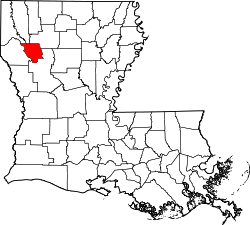This article relies largely or entirely on a single source .(September 2025) |
East Point | |
|---|---|
| Hamlet of East Point | |
| Coordinates: 32°09′56″N93°25′53″W / 32.16556°N 93.43139°W | |
| Country | |
| State | |
| Parish | Red River |
| Elevation | 44 m (144 ft) |
East Point is an unincorporated community in Red River Parish, Louisiana, United States. [1]
The private K-12 school, Riverdale Academy (established 1970), is located in East Point.


